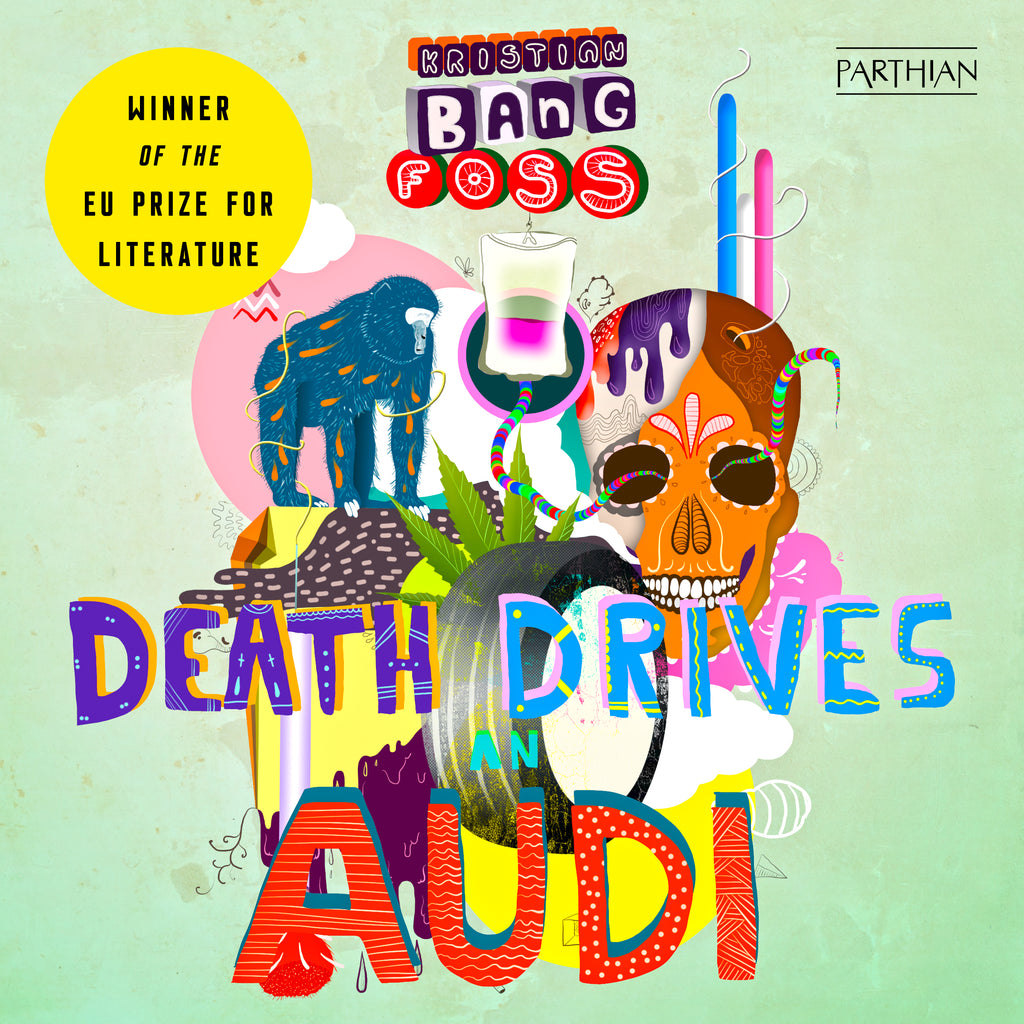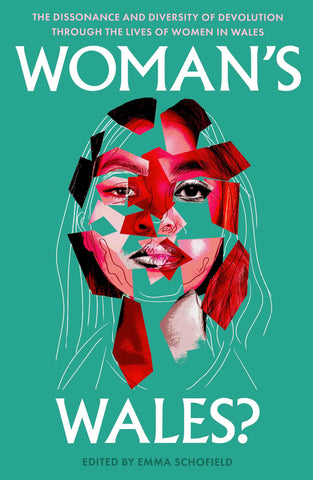
Talking Translation: Interview with Caroline Waight on Death Drives an Audi by Ann Bjerregaard

Caroline Waight is an award-winning freelance translator from Danish and German into English. Among her recent translations we find the darkly humorous novel Death Drives an Audi by Danish author Kristian Bang Foss. The translation is published by Parthian Books as part of their Carnivale translations series. We asked her about the process of translating the novel and got her to tell more of the explorative and creative work that is translation. Ann Bjerregaard is an editor and writer based in Denmark.

Ann: How did you become a translator?
Caroline: I got into translation, because I was working in publishing, in the editorial department of Thames and Hudson, who publishes only non-fiction. It was fine, but I felt that it wasn’t very creative. This got me thinking about my skills and what I would like to do in future, and then I figured translation would be interesting. I had never done it before – not professionally, at least – but I figured, ‘Oh, maybe I could be good at that.’ As it happened, there was a translation competition from German into English, which I entered and won. That helped me get my first client, because it involved going out to Berlin and the Leipzig Bookfair and meeting publishers. That got me on the scene. Then I wanted to do Danish as well, but I didn’t have any contacts with Danish publishers. So, I entered a competition for a mentorship program, which was run by the British Centre for Literary Translation. The idea is that they pair you up with an experienced translator and then you work with that person. My mentor was Martin Aiken, who is an amazing translator from Danish and Norwegian into English. I worked with him for about six months, and he introduced me to Danish foreign rights agents and publishers. That gave me the contacts that I needed to start working from Danish, and it just built from there. We would also talk more generally about the business of translation because that is a bit opaque to people who aren’t used to it.
A: Yeah, it’s a very invisible profession in some ways.
C: It is! Translators always grumble about this, but we often don’t get mentioned in reviews and such, or if you do your name only appears once. Obviously, we’re not the author, but it’s a funny situation – you don’t write the book, but at the same time you kind of do. All of the words are words that you have chosen. You’re guided all the time by the author, of course, but it is a very weird relationship between the author and the text and you and your new text.
A: Could you tell us a bit about your working method?
C: Many translators will do lots of drafts. They start off and just write, and if they don’t like what they write or don’t understand something, they’ll move on and come back to it later. I’m the opposite of that. I like to work slowly, sentence by sentence. I don’t move on until I’ve written it in a way that I’m happy with, at least on a paragraph level, but also often at the sentence level. I don’t do a lot of drafts – obviously, I read through everything and I do make edits, but I don’t change anything major. If I change things later, it’s usually because something suddenly pops into my head at a random time. I’ll be doing something else, and then it will pop into my head like ‘Oh! That will be a much better way to say this!’
A: So how do you begin translating a novel? Do you read the whole thing through first?

C: I actually don’t. I feel kind of ashamed to say that, because I think there is an unwritten rule that you’re supposed to do that as a translator, but I don’t like to do that, because I like to discover the book as I translate. Obviously, that means that sometimes you do have to make changes as some things will only make sense later or you suddenly understand references. But you can always do that. The text is a living thing until you’ve sent it off. I prefer to sit down and start writing. When you reach the end of a sentence you might go, ‘Oh no, this is how it should go.’ Then you move things around. And then you take the next sentence and so forth. It’s probably an unnecessarily labour-intensive process, but I like the results that it gives, and I like the process of discovering the book as I go. For me it adds a bit more vibrancy to the work – I find that I have good ideas that way.
A: What was the most challenging part of translating Death Drives an Audi?
C: I think that would be the tone. The novel has a very specific voice that is the most important element – it defines the whole novel. It’s a very delicate balance between irony, humour, and lightness, but also this dark undertone all the time. It was a challenge to get the tone to hit the right balance, because both the main characters are kind of depressed – they’re these misfits who find one another in this very unlikely way, and their lives are both disasters, and they’re kind of hopeless. But the way that they attack life through irony and humour is really inspiring. That was the most challenging aspect of the translation because you don’t want to turn it into slapstick comedy, but at the same time it has to be humorous. And you want to keep it on that knife’s edge.
A: While we’re at humour – what was your approach to translating humour in Danish?

C: Humour is always one of those tricky things. I think Danish humour and British humour do have a lot in common. They’re both often quite deadpan and downbeat, and I think we both enjoy irony. So as a translator, you don’t have to do too much work to carry the humour across. But obviously there are some things that demand more work. It’s often references that English readers probably will not get. I took different approaches depending on the situation. For example, there is one pun about an armchair from IKEA. In the Danish version it was called Boliden, which is an actual piece of IKEA furniture. I changed that to Bonkinnet to maintain the pun in English. In that case, you have to translate it for it to make any sense, though the pun may not be as good in English as it is in Danish. At other times you can hope that the context does some of the work for you – that the reader will understand enough from the context to still get the joke. Take for example the rum balls [Danish pastry] with rat droppings from Yummy Dreams in Lolland – obviously, English language readers won’t know anything about the different parts of Denmark and what kind of reputations they have, but the overall point of that paragraph is the conjunction between something that is really happy, yummy and wonderful, and this mundanity of ordinary life and the ugliness of things. And it is from this conjunction that the humour comes. Even if English readers don’t get the references, they would still get the joke and it would still be funny.
A: How did you go about translating some of the more culturally specific parts of the novel?
C: It depends on the context. For example, there’s the passage about Stein Bagger. Here I had to explain a little bit. You can put in explanatory stuff, but you have to be subtle. You must weave it into the sentence, as if the author might have done that anyway. Most people in Denmark would know Stein Bagger, but even if you don’t know who he is, you will get the idea. You don’t want to weigh things down – that’s a balancing act as well. It’s always hard to judge your text as a translator, because you’re not coming to it with fresh eyes. You already know what the Danish says and who this person is. You already work from a slightly biased position. That’s where an editor is very useful. Because they are coming to it with fresh eyes and they don’t speak the original language. Sometimes an editor will flag something and say, ‘I have no idea what this means – you need to rephrase this. This won’t come across.’ And then I can change it or go back to the author.
A: This might be a dangerous question, but does it matter whether you like the book you’re translating?
C: I think so. I really liked this book, particularly as we got more into it and we got onto the road trip. It was brilliant, and I loved translating it. So yeah, I think it does matter, because A) it makes you want to work on it, so you get up in the morning and actually feel keen to do it. This way you don’t have to force or bribe yourself, which sometimes I’ve had to do. And when you work on a book for months, it becomes very hard if you take little pleasure in the work. And B) you’re immensely more willing to go the extra mile. You can always cut corners as a translator, and if you don’t like a book, you’re always a bit more tempted to do that. Whereas, when you really enjoy it, you spend most of your time thinking about it. I would be thinking about the book when I was in the shower or out for a walk, and it would just pop into my head. And that improved the translation, because all the extra time I would think about it, I would get good ideas or think of sentences I had to change. And that doesn’t happen if your brain doesn’t actually want to think about it. It’s just a job if it’s like that. And for me mostly it’s not just a job – it’s actually something that I love to do. I am genuinely excited to see how this book does. I think it’s really good, and I’m so surprised that it hasn’t been translated before. I get that humorous books are often a bit of a harder sell, because people worry that they’re more culturally specific, but this sort of humour is actually quite transferable. I think it works very well in English, and I think the recognition of this kind of miserable, ground-down, depressing urban life is something that will ring true with a lot of people in this country.
See more details of the audiobook here with Spiracle Editions
https://www.spiracleaudiobooks.com/audiobooks/death-drives-an-audi



